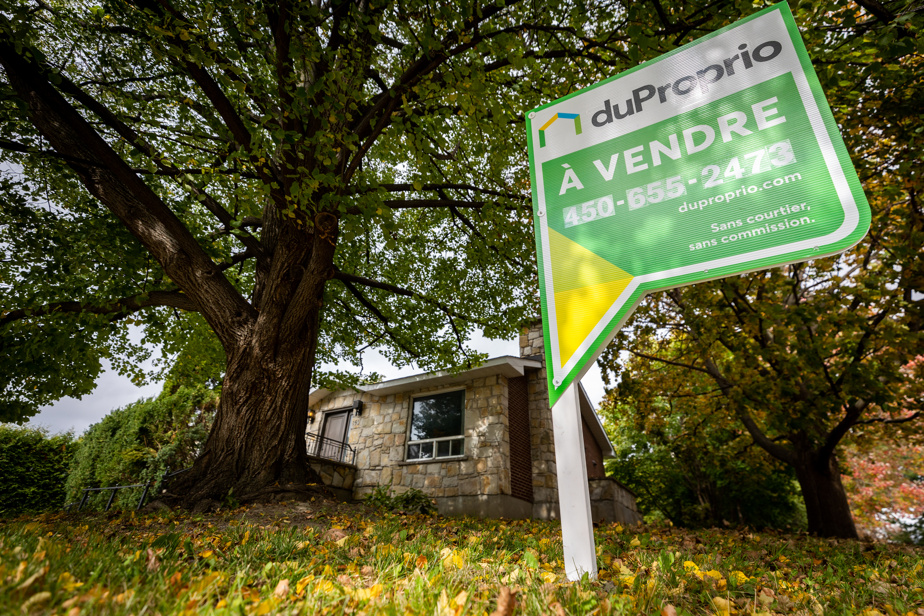(Montreal) The combined effects of the housing crisis and inflation appear clearly in the imposing portrait of Quebec’s regions unveiled by the Quebec Statistics Institute on Wednesday.
The nearly 300-page document touches on a multitude of subjects, but questions of housing and property show a deterioration in the situation of households.
As house prices have soared, the proportion of homeowners has declined in 2021 for the first time since 1971.
The 2023 municipal property assessment rolls show an increase in the average value of 20.3% across Quebec compared to the previous year. All MRCs recorded an increase, the strongest being in the southwestern regions of the province, namely in Montérégie, Laurentides-Lanaudière and Outaouais. For a second consecutive year, no MRC recorded a decline in house prices.
The pronounced increase in value began, as we will remember, at the turn of 2020 and 2021 and it is hardly surprising to note that the property rate fell, going from 61.3% in 2016 to 59, 9% in 2021 according to Statistics Canada data. This is the first decline in this rate in 50 years.
More tenants in town
The ownership rate varies enormously from one region to another, the highest being in the regions of Gaspésie – Îles-de-la-Madeleine (73.0%), Lanaudière (72.5%) and Chaudière-Appalaches (71.6%). In contrast, it is only 39.6% in Montreal, which is typical of a highly urbanized environment. All other regions of Quebec are above the Quebec average of 60% with the exception of Quebec, which is still close to it at 58.2%.
Nord-du-Québec represents the exception outside urban areas, with the lowest property rate in Quebec at 35.6%, but this situation is largely attributable to the fact that a high proportion of citizens who are members of First Nations occupy housing provided by local government.
Unaffordable even for owners
Housing remains expensive, even too expensive, for nearly one household in six (16%) who spend 30% or more of their total income on housing costs, a total of 595,700. This proportion increases to 25% for renter households, because, although it is little talked about, one owner household in 10 also finds itself spending more than 30% on housing costs, a proportion which is likely to increase with increases in mortgage rates.
Among other interesting statistics, we note that for a sixth consecutive year, Montérégie displays the highest disposable income per capita ($35,520) of all administrative regions, followed closely by Montreal ($35,311), the Laurentians ($35,169) and Capitale-Nationale ($35,163). Among the five regions where disposable income exceeds that of Quebec as a whole, Abitibi-Témiscamingue ($34,465) is the only one far from major urban centers.
Nord-du-Québec (13%) and Montreal (10.8%) display – by far – the highest after-tax low-income rates. In contrast, the peripheral regions of Montreal, namely the Laurentides (5.4%), Lanaudière (5.4%) and Montérégie (5.4%), as well as the Côte-Nord (5.6%) and Abitibi-Témiscamingue (5.8%) had the lowest low-income rates. As an indication, in 2020, for Quebec, the Low Income Measure threshold for a single-parent family with two children is $40,282, while it is $46,514 for a family made up of a couple and of two children.
Furthermore, the population of Quebec aged 25 to 64 was generally more educated in 2021 than in 2016. The proportion of citizens in this age group having obtained a certificate, diploma or university degree increased by 4 points percentage during this period (going from 29% to 33%).
Another data, this time affecting the labor market, shows 233,500 vacant positions in Quebec in 2022, an increase of approximately 29,200 compared to the previous year. The four regions with the most vacant positions are Montreal (72,900), Montérégie (36,800), Capitale-Nationale (26,400) and the Laurentides (16,400). The four regions with the fewest vacant positions are: Bas-Saint-Laurent (4,400), Abitibi-Témiscamingue (4,100), Côte-Nord and Nord-du-Québec (4,000) and Gaspésie – Îles- de-la-Madeleine (1500).
